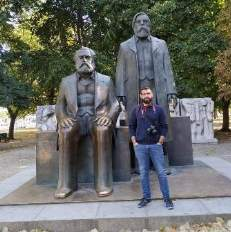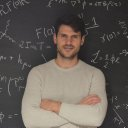The Quantum & The Gravity
A special issue of Universe (ISSN 2218-1997). This special issue belongs to the section "Foundations of Quantum Mechanics and Quantum Gravity".
Deadline for manuscript submissions: closed (15 February 2022) | Viewed by 25331
Special Issue Editors
Interests: black holes; general relativity and gravitation
Interests: general relativity; quantum gravity; higher-derivative gravity; nonlocal quantum field theory; black holes; gravitational waves
Special Issues, Collections and Topics in MDPI journals
Interests: neutrino physics; general relativity and gravitation; quantum field theory; non-commutative geometry; non-extensive thermodynamics
Special Issues, Collections and Topics in MDPI journals
Interests: neutrino physics; quantum field theory in curved spacetime; quantum gravity; general relativity; extended theories of gravity; Casimir effect; quantum information
Special Issues, Collections and Topics in MDPI journals
Interests: quantum field theory; quantum gravity; mathematical physics; black holes, neutrino physics; canonical transformations; topological defects; topological phases
Special Issue Information
Dear Colleagues,
The aim of the international workshop “The Quantum & The Gravity 2021″ is to provide a stimulating occasion of discussion on our current understanding of nature at the fundamental level and on the interplay between quantum and gravitational physics. To properly address these delicate topics, foundations of quantum mechanics, quantum field theory and quantum information, as well as quantum aspects of black holes and phenomenology of quantum gravity, will be covered throughout the period of the workshop.
Different schools of thought will be brought together so as to let everyone benefit from fruitful debates and possibly develop novel insights and a critical viewpoint. All these inspiring ideas will be summarized and contained within the Special Issue (SI) that is associated with the conference. Therefore, the main subjects that will be discussed in the articles belonging to the SI are precisely the ones that lie at the heart of the online workshop.
Dr. Giulio Francesco Aldi
Dr. Luca Buoninfante
Dr. Giuseppe Gaetano Luciano
Dr. Luciano Petruzziello
Dr. Luca Smaldone
Guest Editors
Manuscript Submission Information
Manuscripts should be submitted online at www.mdpi.com by registering and logging in to this website. Once you are registered, click here to go to the submission form. Manuscripts can be submitted until the deadline. All submissions that pass pre-check are peer-reviewed. Accepted papers will be published continuously in the journal (as soon as accepted) and will be listed together on the special issue website. Research articles, review articles as well as short communications are invited. For planned papers, a title and short abstract (about 100 words) can be sent to the Editorial Office for announcement on this website.
Submitted manuscripts should not have been published previously, nor be under consideration for publication elsewhere (except conference proceedings papers). All manuscripts are thoroughly refereed through a single-blind peer-review process. A guide for authors and other relevant information for submission of manuscripts is available on the Instructions for Authors page. Universe is an international peer-reviewed open access monthly journal published by MDPI.
Please visit the Instructions for Authors page before submitting a manuscript. Submitted papers should be well formatted and use good English. Authors may use MDPI's English editing service prior to publication or during author revisions.
Keywords
- theories of gravitation
- quantum mechanics and quantum field theory
- quantum information and quantum resource theory
- black holes
- quantum gravity phenomenology









